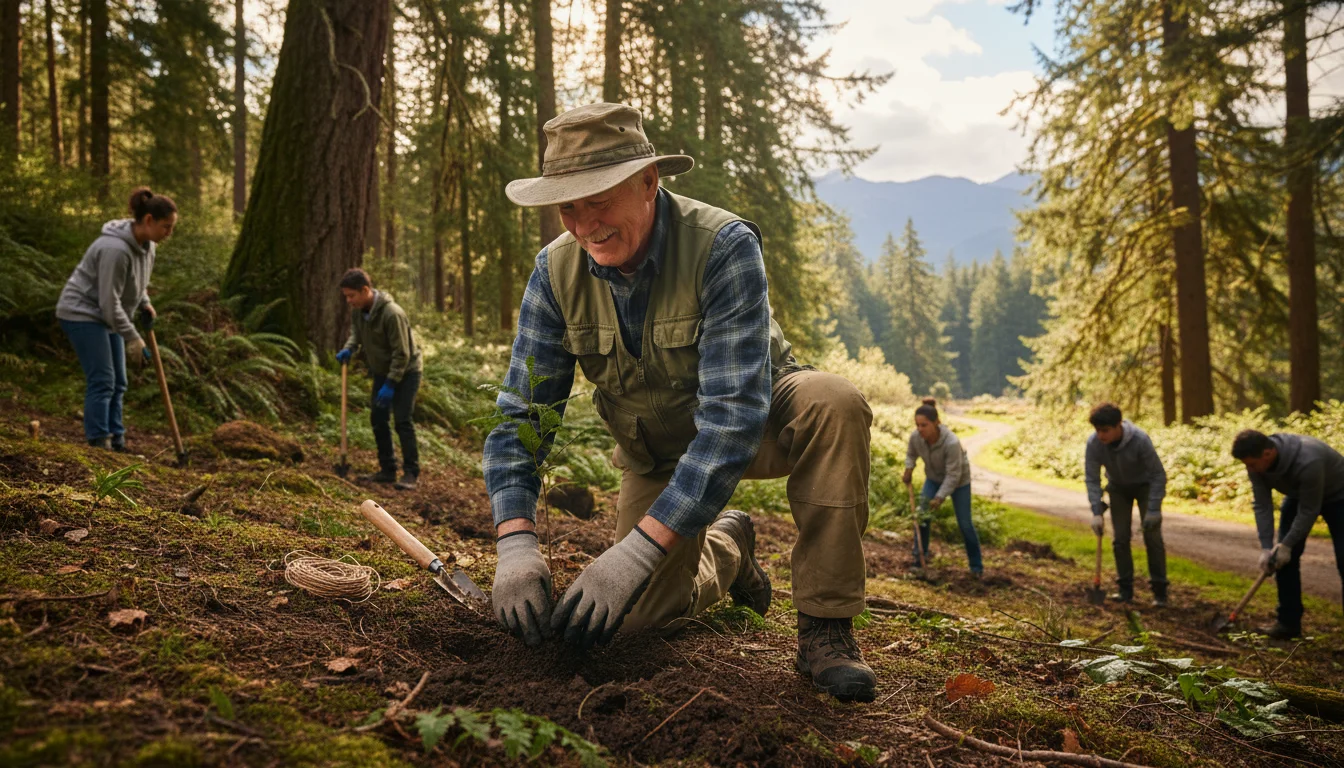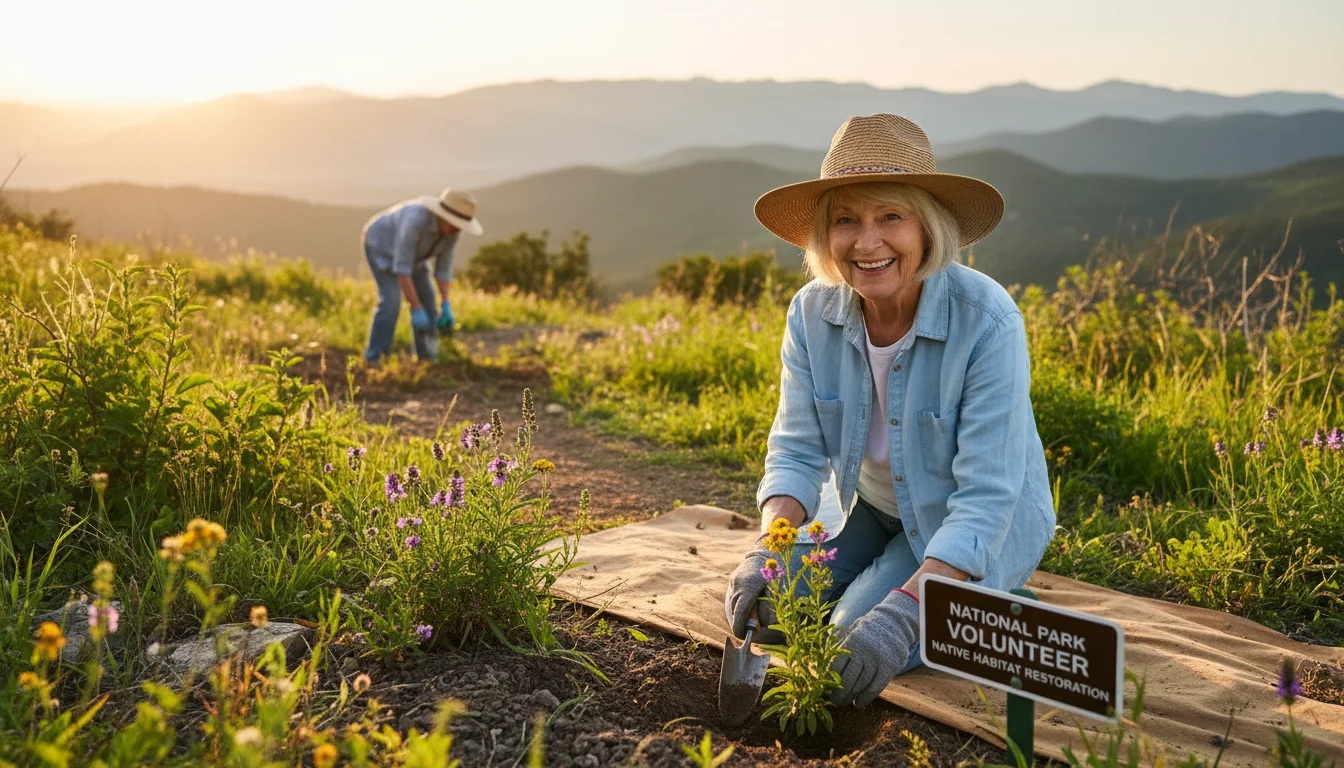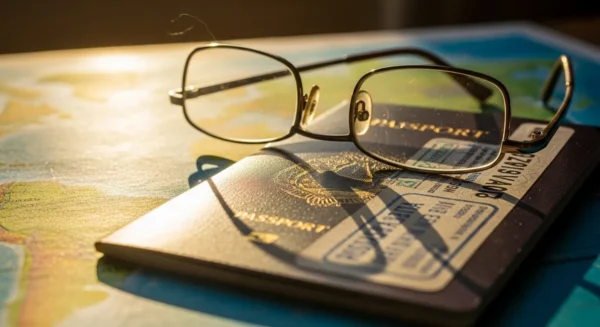

Introduction: Embracing Purposeful Travel in Your Retirement Journey
Retirement. For many of us, it’s a word that shimmers with possibility. After decades of alarm clocks, commutes, and deadlines, the sudden gift of unstructured time can feel both liberating and a little daunting. We travel, we visit the grandkids, we finally tackle that garden project. But after a while, a question can start to bubble up: What’s next? How can we make these golden years not just pleasant, but truly meaningful?
If you’ve ever found yourself gazing at a beautiful vacation photo and feeling like something was missing—a deeper connection, a sense of purpose—then you might be ready to explore one of the most rewarding adventures of a lifetime: volunteer travel. This isn’t about backpacking on a shoestring budget or roughing it in a tent (unless you want to, of course!). Instead, it’s about thoughtfully blending your desire to see the world with your desire to make a difference. It’s about taking the incredible wealth of skills, patience, and wisdom you’ve accumulated over a lifetime and sharing it with a community that needs it.
These kinds of journeys, often called volunteer vacations or purposeful travel, are becoming increasingly popular among retirees. Why? Because they offer a unique combination of stimulation, service, and social connection. They challenge us to step outside our comfort zones, learn new things, and see the world through a completely different lens. This isn’t just about being a tourist; it’s about being a temporary member of a community, contributing in a real way, and coming home with stories that go far beyond the usual sightseeing highlights.
In this guide, we’ll explore the vast and exciting world of volunteer travel for seniors. We’ll look at the different types of opportunities available, offer practical tips for getting started, and address some of the common questions and concerns you might have. Your retirement journey is your own to design, and it can be as adventurous and impactful as you want it to be.

Finding Your Path: Exploring the Options
The term “volunteer travel” covers a wonderfully diverse range of experiences. The key is to find an opportunity that aligns with your passions, your physical abilities, and your personal goals. The perfect trip for a retired nurse will look very different from the ideal one for a former accountant or a lifelong gardener. The beauty is that there’s a place for every skill set. Let’s break down some of the most common types of opportunities to help you find your path.

Find Your Niche: Volunteering by Interest and Skill
The best way to start is by thinking about what truly energizes you. What causes do you care about? What skills did you hone during your career or through your hobbies? Your life experience is your greatest asset.
Conservation and the Environment: If you love the great outdoors, this could be your calling. Opportunities abound, from light-duty work to more strenuous projects. You could find yourself helping to maintain trails in a beautiful park, participating in a bird count for a research project, helping at a sea turtle hatchery, or assisting with organic farming at a community garden. These roles often place you in some of the most stunning natural settings in the world. For domestic travel, the options are incredible. Travel and recreation information for seniors is available at the National Park Service, which not only offers discounts but also has volunteer programs in parks across the country.
Education and Mentoring: Are you a former teacher, executive, or just someone who loves sharing knowledge? Your wisdom is in high demand. Many organizations look for volunteers to teach English to children or adults, help students with their homework at an after-school program, or lead workshops on basic computer literacy or business skills. You don’t need a formal teaching degree for many of these roles—just patience, kindness, and a willingness to connect. These experiences offer a profound way to invest in the next generation, whether in a small village in Southeast Asia or an underserved community right here in the U.S.
Community Development and Building: For those who enjoy tangible results, community development projects can be incredibly satisfying. This might involve helping to build a house, a school, or a community center. While some of this work is physically demanding, there are always roles for everyone, including painting, organizing supplies, or helping to prepare meals for the crew. It’s a powerful way to work side-by-side with local families and see a project come to life.
Arts and Culture Preservation: If you have a passion for history, art, or archaeology, you can find unique opportunities to help preserve cultural heritage. This could mean helping to restore an ancient building, cataloging artifacts in a small local museum, or assisting with preparations for a cultural festival. These senior trips offer a deep dive into the history and soul of a place, far beyond what you could experience as a typical tourist.

Choose Your Scenery: Domestic vs. International
Once you have an idea of the *what*, it’s time to consider the *where*. Both domestic and international travel offer unique rewards and challenges.
Domestic Opportunities: Don’t underestimate the incredible need and adventure waiting in your own backyard. Volunteering within the United States eliminates the need for passports, visas, and navigating complex cultural or language barriers. You could join a disaster relief team in a community hit by a hurricane, help build affordable housing just a few states over, or spend a season working at a national park. Opportunities to give back can be found via AmeriCorps Seniors, a fantastic government program that connects older adults with service opportunities in their communities and across the country.
International Adventures: For those with a bigger travel bug, international volunteer trips offer complete cultural immersion. It’s a chance to live, work, and eat alongside people from a completely different background. The experience can be life-altering, building bridges of understanding and compassion. However, it requires more preparation, including health check-ups, potential vaccinations, and a greater need for flexibility and an open mind. Reputable organizations will provide extensive support to help you navigate these logistics.

Set Your Pace: Short-Term vs. Long-Term
Finally, consider the time commitment you’re willing to make. Many organizations offer structured volunteer vacations that last for one to two weeks. These are perfect for a first-time experience, providing a taste of service-based travel with plenty of support. For those who want to dive deeper, programs lasting a month or more allow for a much richer experience, giving you time to build stronger relationships and see the longer-term impact of your work.

Tips for Getting Started and Making Connections
The idea of planning a volunteer trip can feel overwhelming, but breaking it down into manageable steps makes it much more approachable. It’s an exciting process of discovery, both about the world and about yourself.

Step 1: Reflect on Your Personal Goals
Before you even open a web browser, take some time with a notebook and pen. Ask yourself a few key questions:
- What is my “why”? Am I looking for purpose, adventure, social connection, or a way to use my professional skills?
- What is my budget? Be realistic about program fees, airfare, insurance, and spending money.
- What is my physical comfort level? Am I okay with a rustic dorm, or do I need a private room and a hot shower? Am I able to walk long distances or do I need a less physically demanding role?
- Do I want to travel solo, with a partner, or in a group? All are great options with different dynamics.
Honesty in this stage is crucial. It ensures you find a program that fits you like a glove, rather than trying to force yourself into an experience that isn’t right.

Step 2: Diligent Research is Your Best Friend
Once you know what you’re looking for, it’s time to find the right organization. This is the most important step. A good organization acts as a responsible bridge between you and the community, ensuring your presence is helpful, not harmful. Here’s what to look for:
Transparency: Reputable organizations are clear about where your money goes. Look for a detailed breakdown of program fees. How much goes to administration versus the project itself? If they aren’t transparent, that’s a red flag.
Community-Led Projects: The best programs are those initiated and driven by the local community. The organization should be working *with* local leaders, not imposing their own ideas. This ensures the work is sustainable and truly wanted.
Reviews and Testimonials: Read reviews from past volunteers, especially those in your age group. This will give you an honest look at the day-to-day reality of the program. Look for reviews on third-party sites, not just the organization’s own website.
Support: Does the organization provide pre-departure training, travel and medical insurance information, and 24/7 in-country support? Good organizations prioritize your safety and well-being.

Step 3: Prepare for the Journey
With your program chosen, the fun of preparation begins! Talk to your doctor well in advance about any necessary vaccinations or health precautions for your destination. Pack thoughtfully—focus on practical, comfortable clothing suitable for the work you’ll be doing, rather than a typical vacation wardrobe. Most importantly, prepare your mind. Adopt an attitude of flexibility, humility, and curiosity. Remember that you are a guest. Your primary role is to listen, learn, and offer your help where it is needed.

A Personal Perspective: Lessons from the Field
While I could list benefits all day, the true magic of this kind of travel is best understood through stories. I’ve spoken with dozens of fellow retirees who have embarked on these journeys, and their experiences echo a common theme: you receive far more than you give.
Think of Eleanor, a 72-year-old retired librarian from Ohio. She had always dreamed of visiting the cloud forests of Costa Rica. She found a program where she could help a small conservation center with data entry and cataloging plant species. She was nervous, worried she wouldn’t be strong enough for the hikes. While she took it slow on the trails, her real contribution came from her organizational skills. She created a simple, effective system for their research library that the young, busy biologists had never had time to implement. But what she talks about most is the morning she spent quietly observing a rare quetzal, a moment of profound peace she says she’ll carry with her forever. She went to organize books; she came back with a renewed sense of wonder.
Or consider David, a 68-year-old retired contractor from Texas. After his wife passed away, he felt adrift. His children, worried about his isolation, encouraged him to join a group building a community clinic in a rural part of Guatemala. He was hesitant, but the familiar feel of a hammer in his hand was comforting. He worked alongside other American volunteers and local tradesmen, communicating through gestures and shared laughter. In the evenings, they shared meals and stories. David discovered a new sense of camaraderie he hadn’t felt since his army days. He returned home not only proud of the clinic he helped build but with a new network of friends and a renewed sense of purpose that pulled him out of his grief.
These stories show that purposeful travel is less about what you do and more about who you become in the process. It rebuilds confidence, forges unexpected friendships, and offers a powerful perspective on what truly matters in life.

Resources to Help You Explore Your Interests
The internet is your gateway to finding the perfect opportunity. To get you started, here are a few reputable organizations and platforms known for offering quality programs, many of which are well-suited for older adults.
Road Scholar: Formerly Elderhostel, this organization is a leader in lifelong learning. They offer specific “Service Learning” programs that combine education, travel, and volunteering. These trips are designed specifically for older adults, ensuring a comfortable pace and peer group.
Global Volunteers: This non-profit organization has been connecting volunteers with community-led projects for decades. They offer programs around the world, from teaching English in Poland to assisting with infant care in Tanzania, and they are highly regarded for their focus on safety and sustainable impact.
Projects Abroad: While they cater to all ages, they have dedicated resources and programs for volunteers over 50. They offer a huge variety of projects, from conservation in the Galapagos to journalism in Ghana, providing excellent in-country support.
Habitat for Humanity International: Their “Global Village” trips are a fantastic way to engage in short-term building projects both domestically and internationally. The teamwork and tangible results make these trips incredibly popular and rewarding.
Remember to also leverage broader resources. For lifestyle and community resources, AARP offers extensive articles and local chapters that might even have travel or volunteer groups. For local programs, check your city or county’s Parks and Recreation department website, as they sometimes organize service trips or have partnerships with local non-profits.

Frequently Asked Questions
Am I too old or not physically fit enough for volunteer travel?
Absolutely not! This is one of the most common myths. While some projects, like construction, require physical labor, countless others do not. Opportunities in teaching, mentoring, childcare, administrative support, or arts preservation focus on your knowledge and patience, not your physical strength. Reputable organizations are excellent at matching volunteers to appropriate roles. The key is to be open and honest about your abilities and limitations during the application process.
Is it safe to travel abroad as a senior volunteer?
Safety is a valid concern, and established organizations take it very seriously. They choose stable regions, provide secure and vetted accommodations, have experienced on-the-ground staff, and offer comprehensive pre-departure information covering everything from local customs to emergency protocols. By choosing a well-regarded organization, following their guidance, and purchasing good travel medical insurance, you can travel with confidence.
Can I afford volunteer travel on a retirement budget?
The costs of volunteer vacations vary dramatically. An international trip with a for-profit company can be expensive, but many non-profit and domestic options are quite affordable. Your program fee typically covers your food, lodging, and project materials. Remember to factor in airfare, insurance, and personal expenses. To manage costs, consider domestic programs, shorter trips, or even fundraising among friends and family who want to support your cause.
What if I want to travel with my spouse or a friend?
Volunteering with a companion can be a wonderful, bonding experience. Most organizations are happy to accommodate couples and friends, ensuring you are housed together and, when possible, placed on the same project. It provides a built-in support system and allows you to share the memories of a lifetime with someone special.
What are the benefits of these senior trips beyond just helping out?
The personal benefits are immense and often the most memorable part of the journey. You will keep your mind and body active, which is crucial for healthy aging. You’ll form deep connections with fellow volunteers and local community members, combating loneliness and expanding your social circle. Most profoundly, you will gain a powerful sense of purpose and accomplishment, proving that your capacity to learn, grow, and contribute never expires.
Disclaimer: The advice in this article is based on general experience and is for informational purposes. Please research local opportunities and consult with relevant experts before making significant lifestyle changes or purchases.
For expert guidance on senior health and finance, visit American Heart Association, Benefits.gov, National Institute on Aging (NIA), Centers for Disease Control and Prevention (CDC) and Medicare.gov.
|
Fact-Checked Content
Our editorial team reviews all content for accuracy and updates it regularly. Learn about our editorial process →
|

















